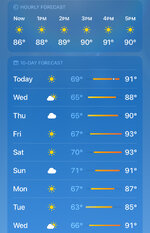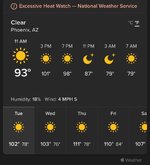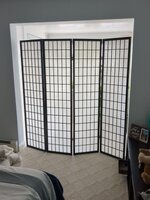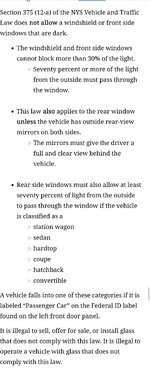Some other comments after reading through:
Window units are incredibly common in the US, but there are houses in older areas that also have the "swing out" windows (I'm literally sitting next to some right now). Those can't fit the window units obviously, but the floor ones that you can connect the exhaust to the window with the hose/pipe are an option there.
An often overlooked part of all of this: areas like Texas and Arizona (and SoCal and such) are built for the heat, where the homes do a better job at cooling off at night when the temperatures drop. Areas that get cold winters are built the exact opposite of this: to retain heat. That means that even though the temperatures aren't as high, it can end up being worse over time since there's no easy way to cool down at night without AC of some sort (winters are the reverse: good in the north because we retain heat, bad in the south because they don't). That doesn't mean it's pleasant at all in either circumstance.
Window Units:
@The Eye in the Sky! has the right idea. You should try to replace these on some sort of routine basis if you can afford it. Even just a year or two newer makes a crazy difference in how efficient they are and the kind of area they can cool easily. Not to mention the previously brought up issue of there being a potential for mold over time. If you're in a place that you don't own that doesn't offer some sort of central heat or heat pump situation, this is your best bet
Central Air: This is a decent solution, but probably not the way to go if you're going to be installing new. If you have an existing system make sure to get it cleaned and maintained. If it's older there's also a chance you might need to replace the entire system soon (this is the case with mine). It could still work perfectly fine, but the coolant it uses is illegal to install these days, meaning if something happens to it it can't be repaired. When you replace the condenser you'll also need to replace the AHU (Air Handler Unit, sometimes called a Furnace) as well because they need to work with eachother.
Heat Pumps: If you're installing new, this is probably the way to go. You can do ducted or ductless (mini-splits) depending on your situation, it would be good to get quotes for both. If you already have ducts, it'll likely be a lot cheaper to utilize them. If you don't, mini-splits will probably be the more affordable solution. Despite the name they do both heating and cooling. It's a good way to convert off of Oil or Gas if that's what you're currently on as well. In order to do this you might also need to upgrade your electric panel (a lot of homes, especially in older areas, are only on 100A panels. You'll need at the very least a 150A to be comfortable in not blacking yourself out, and preferably 200A to be on the safe side). In some states (MA, for instance) there are
very large incentives to do all of this work. Up to $10K for the heat pump work itself in a direct rebate, plus ~30% tax rebate on the remaining cost. The electric panel upgrade you can get a 30% tax writeoff as well if you prove you did the panel upgrade to install energy efficient heating/cooling.
Geothermal: hell yes this is a thing. If you have the yard space for it and the money to do it this is probably my favorite. They'll dig your yard up and bury the components in there, which will take heat from the ground (below the frost level) in the winter and the cool temperatures from below in the summer. Expensive but so cool. Probably can get incentives for this.
Other things? Drink cold beverages, don't use the oven, even silly things like "put a divider in the rooms" helps out. I'll add a picture to the next post to show a basically paper thin divider I have up in a room that's causing a 5+ degree difference.












 I saw this on Instagram but the comment section was pretty torn. Currently, all my blinds are drawn but I'll admit they are not the best. It's one of those things we always say we want to upgrade and never do. I'm OK with my apartment building looking jank as fuck from the outside if it means more effective heat shielding.
I saw this on Instagram but the comment section was pretty torn. Currently, all my blinds are drawn but I'll admit they are not the best. It's one of those things we always say we want to upgrade and never do. I'm OK with my apartment building looking jank as fuck from the outside if it means more effective heat shielding.
